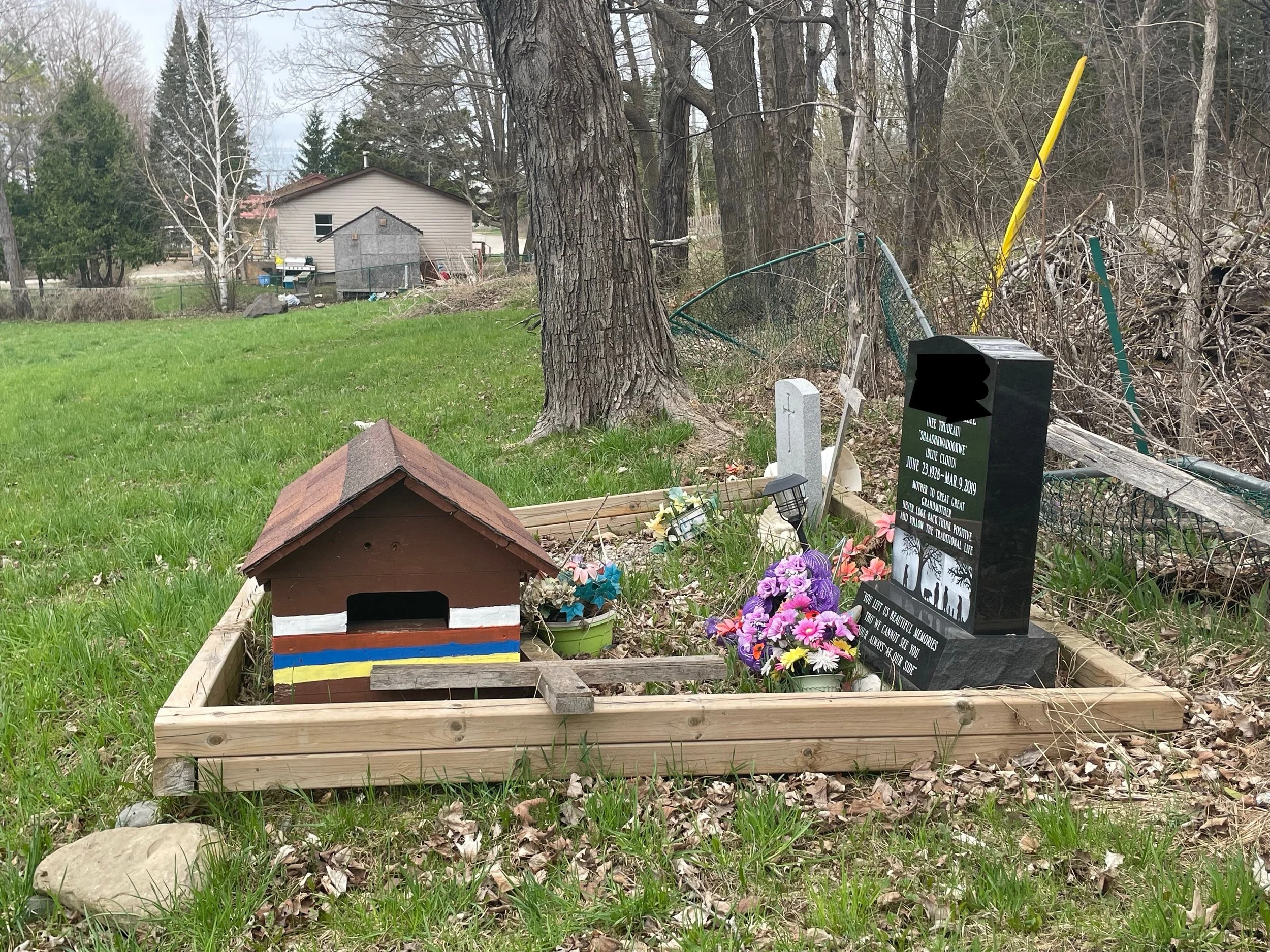The Cemetery That Changed My Life
Picture of a spirit house at a cemetery at Wikwemikong.
Summer is almost upon us! And while I am excited for all that lies ahead as we celebrate National Indigenous People’s Month, I fondly remember my recent trip to Manitoulin Island with the Remembering Project. I had made the trek to Manitoulin to present the Nisoonag Partnership with a finished version of the 1911 Wikwemikong Jesuit Diary, which had been transcribed and translated by many volunteers. Of course, transcribing and translating the old handwritten text wasn’t easy, but wandering about in the cemetery by the church made the long hours of work even more worthwhile and meaningful. And seeing the names engraved on slabs of rock was a gut- wrenching moment. People I knew only from the pages of the old diary suddenly became alive as I recognized their names on the various tombstones. That tender moment was interwoven with feelings of shame and shock as I recalled that the children were often referred to as “savages” in the diary.
Our time in Manitoulin was short but busy. The next day, we attended the Manitoulin Island Residential School Survivor Gathering at the M’Chigeeng First Nation Community Complex. We had the pleasure of meeting the new head of the Nisoonag Partnership, Hilary Trudeau, and were proud of our work. I left Manitoulin grateful not only for the opportunity to join in the gathering but also for all the work that had been done by all who had helped to prepare the final version of the diary. These included Professor Amelia Katanski and her students Clarke Austin, Alisha Clark, Caitlin Dodde, Sierra Hieshetter, Ellie Lepley, Ava Loncharte, Lydia Steyaert, and McKenna Wasmer, at Kalamazoo College in Michigan, USA, and Remembering Project volunteer Marc Lemieux.
Even now, my heart overflows with a deep reverence for life as well as a greater desire to support Canada’s Indigenous Peoples and strengthen Canada’s democracy in whatever way possible.
Kayona Karunakumar

